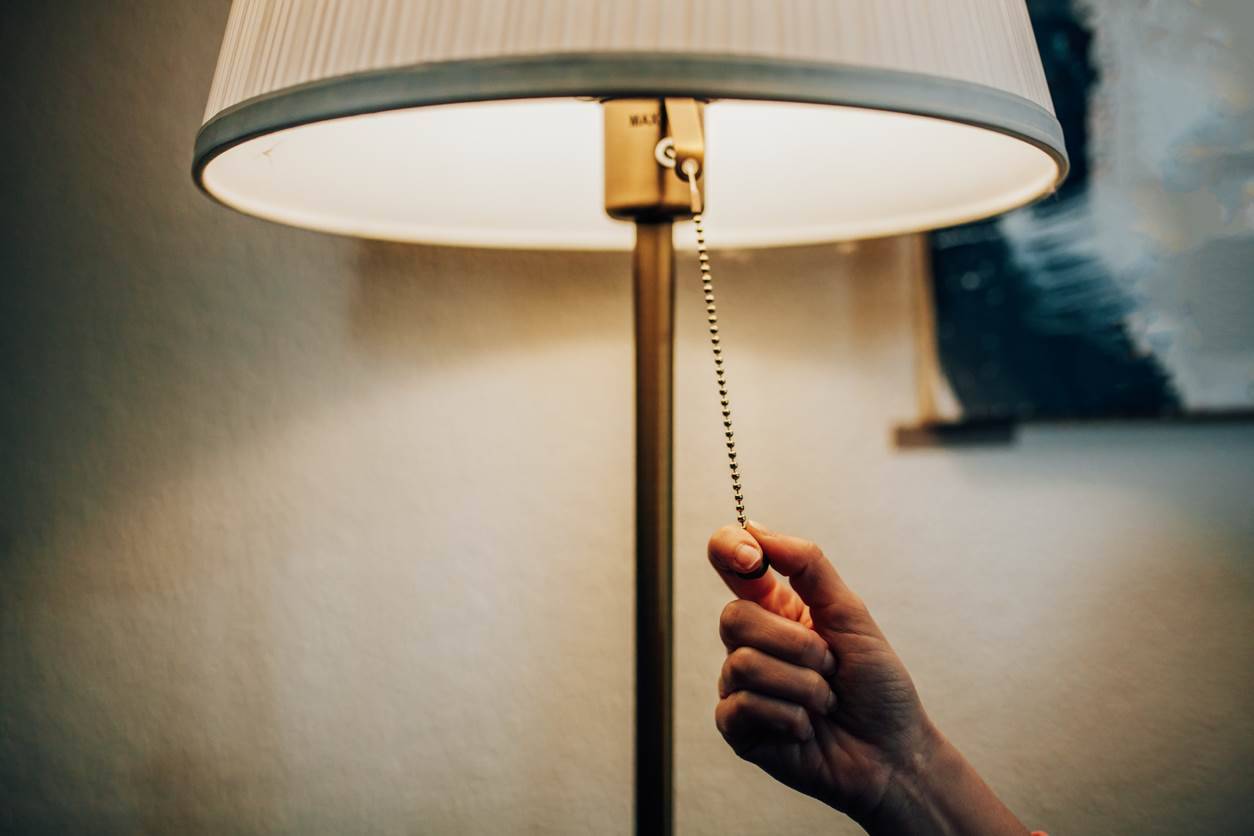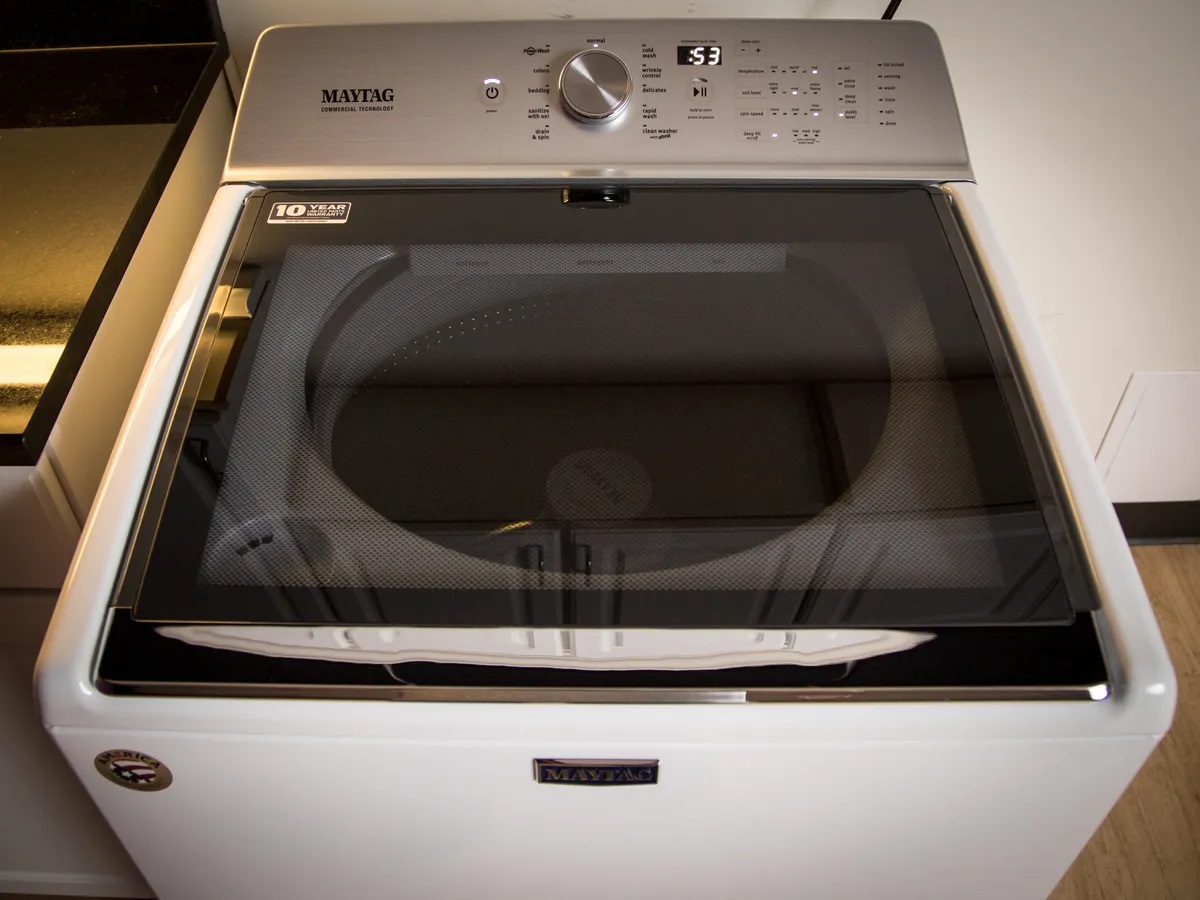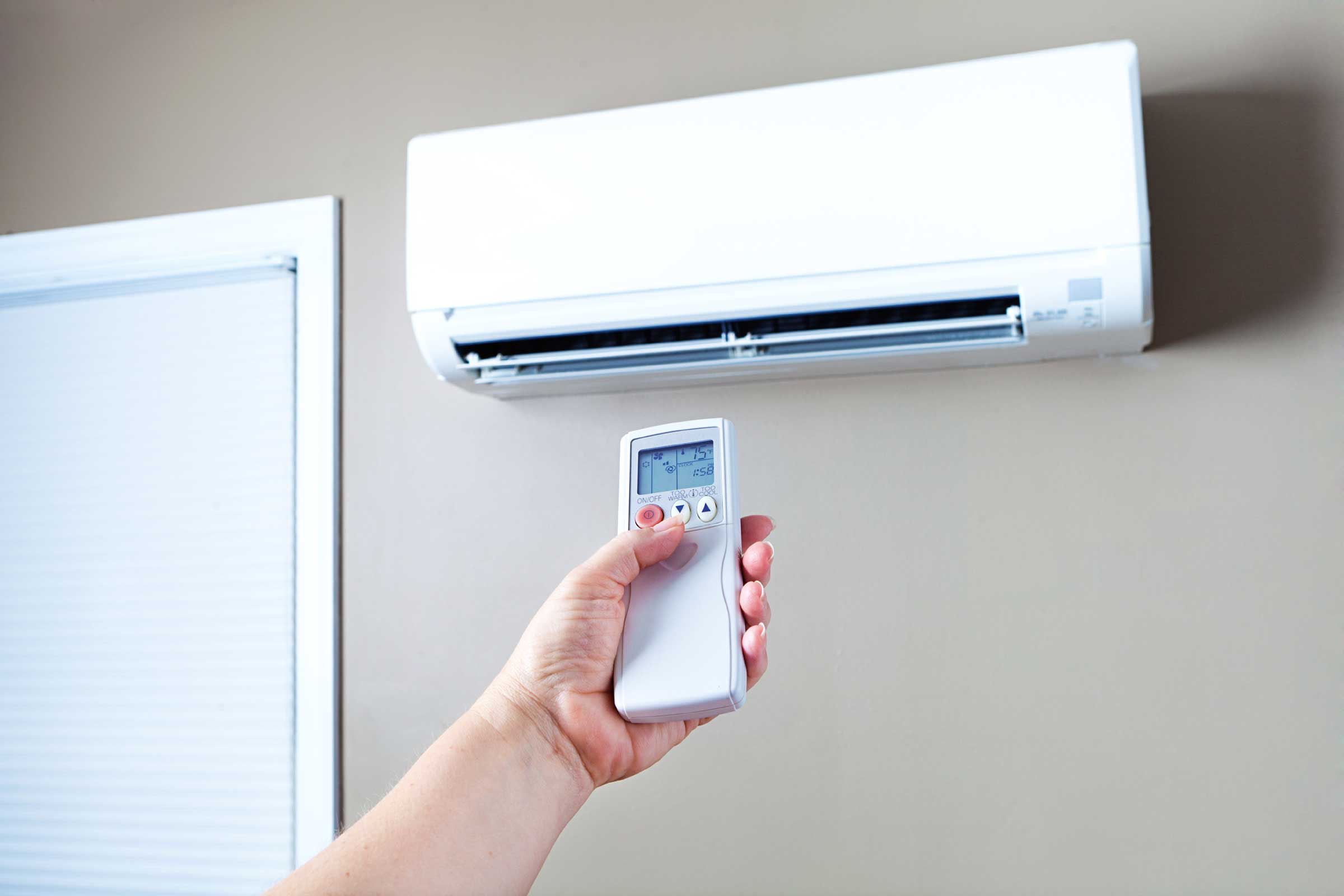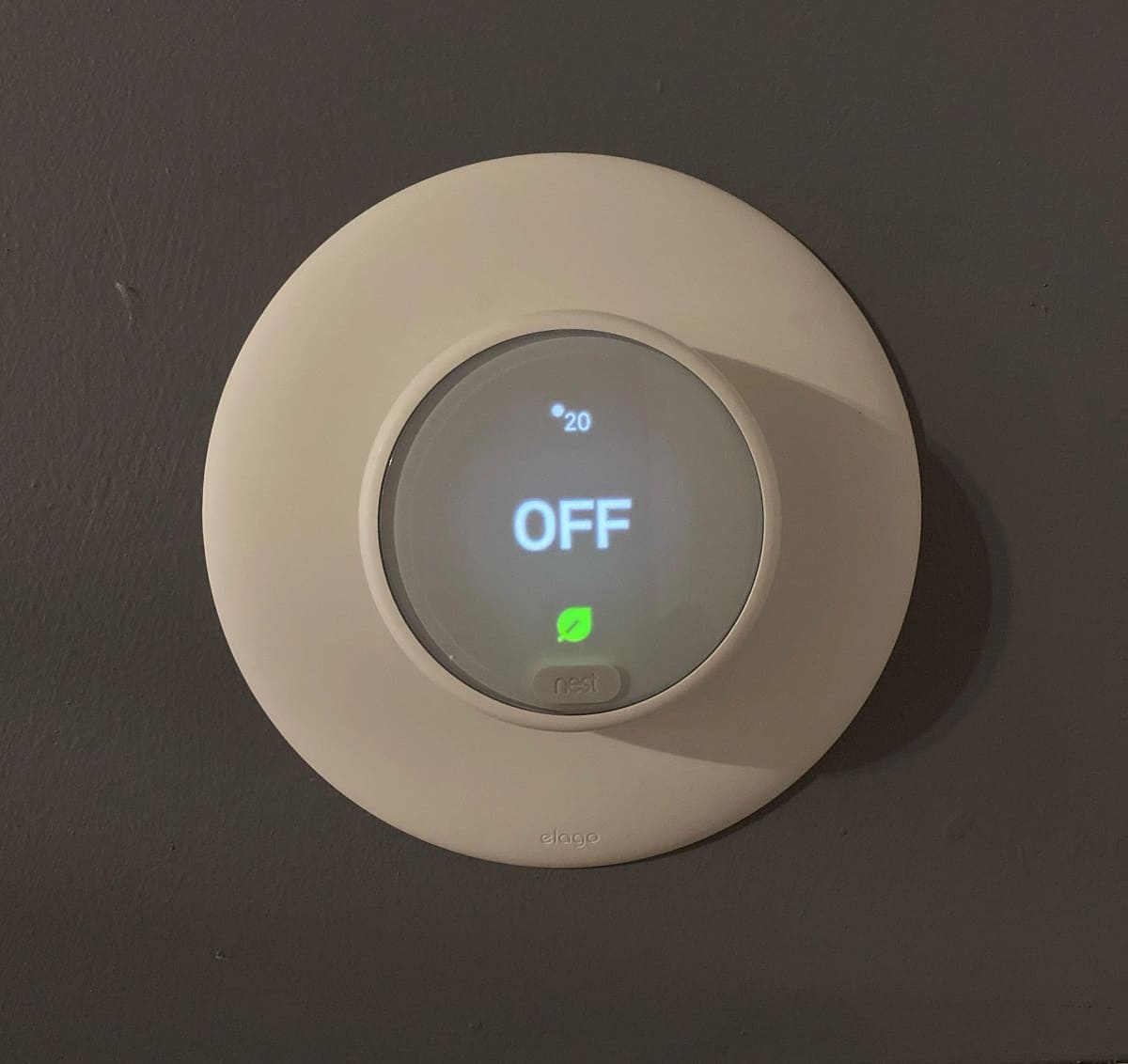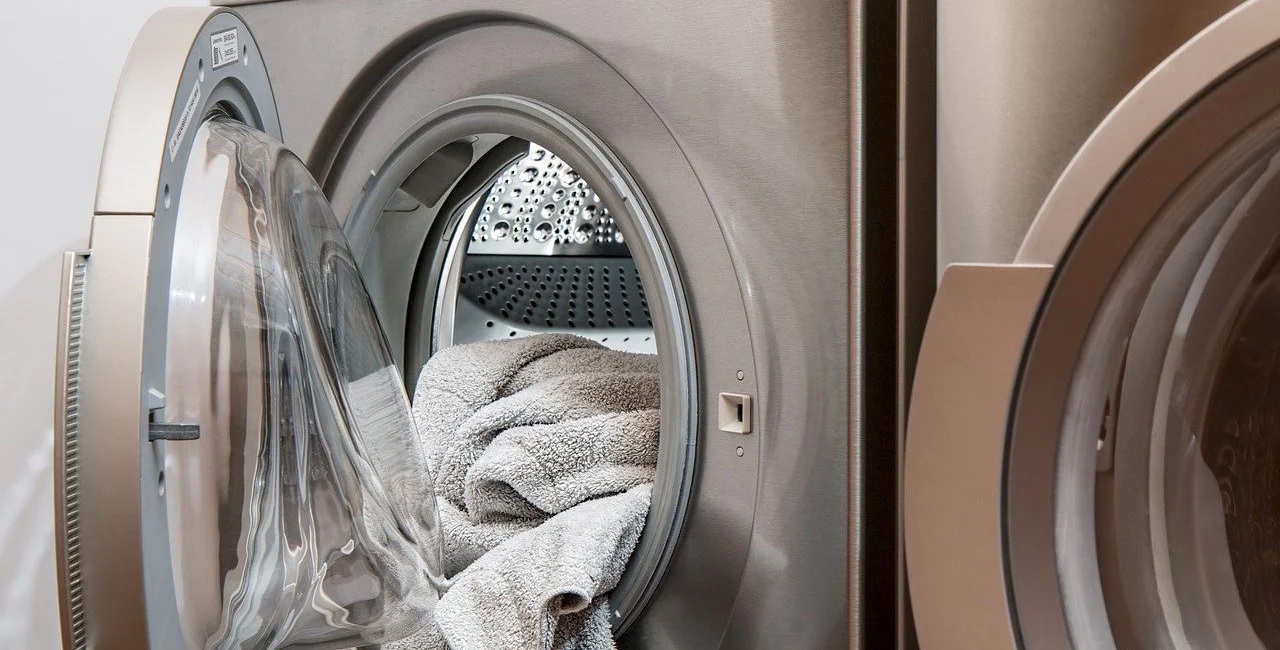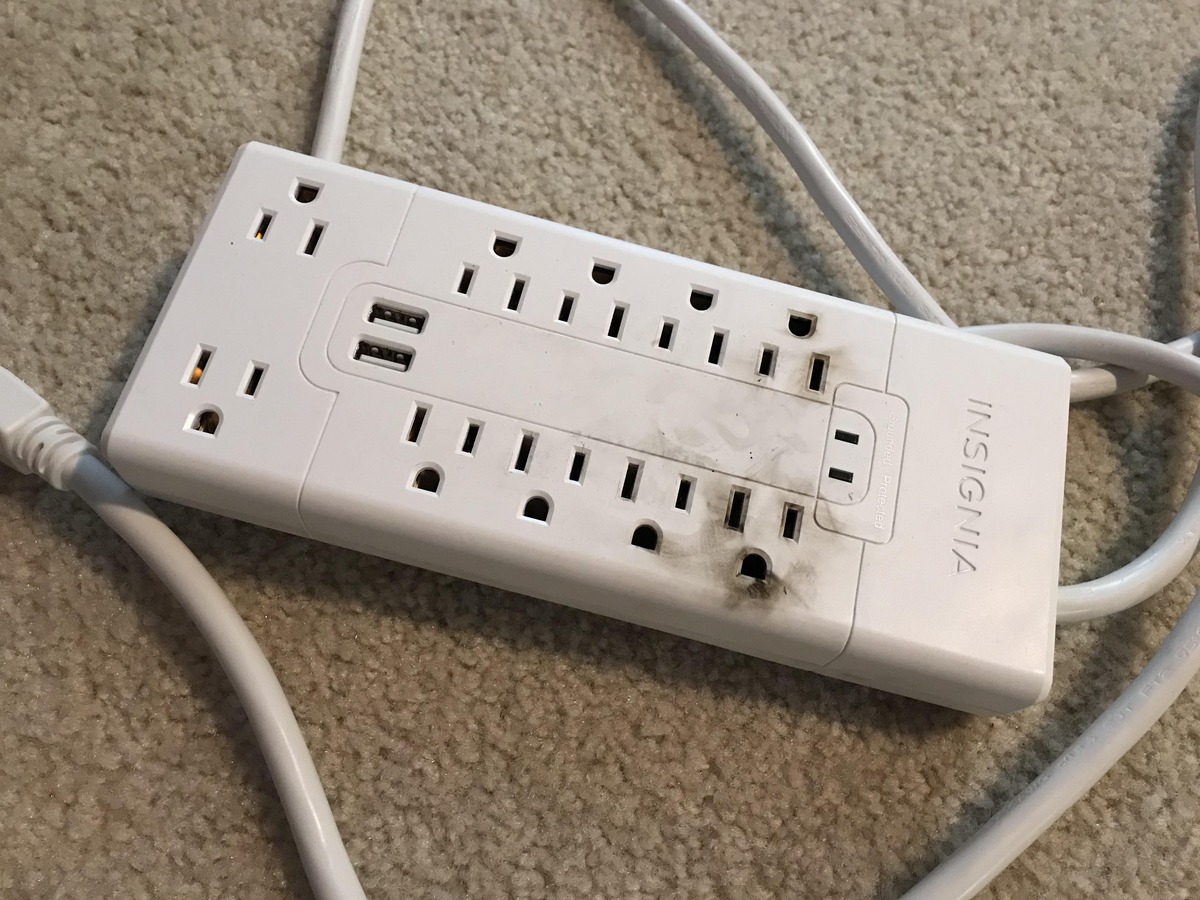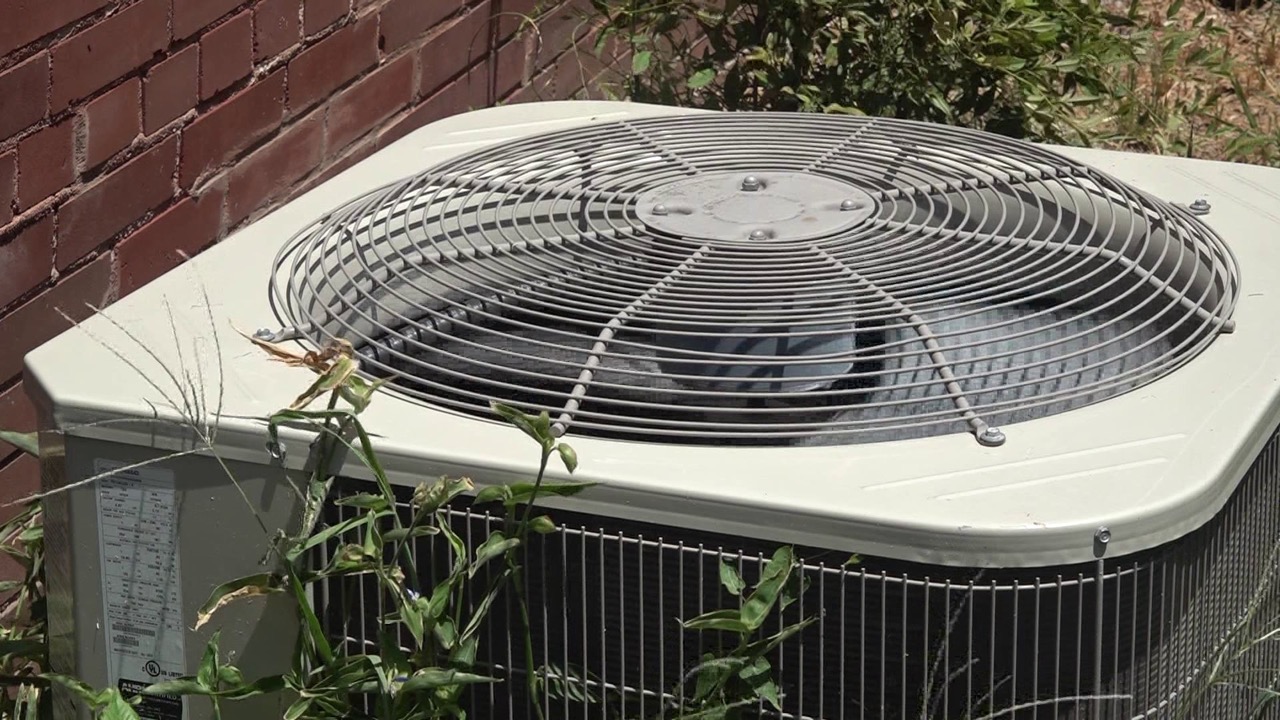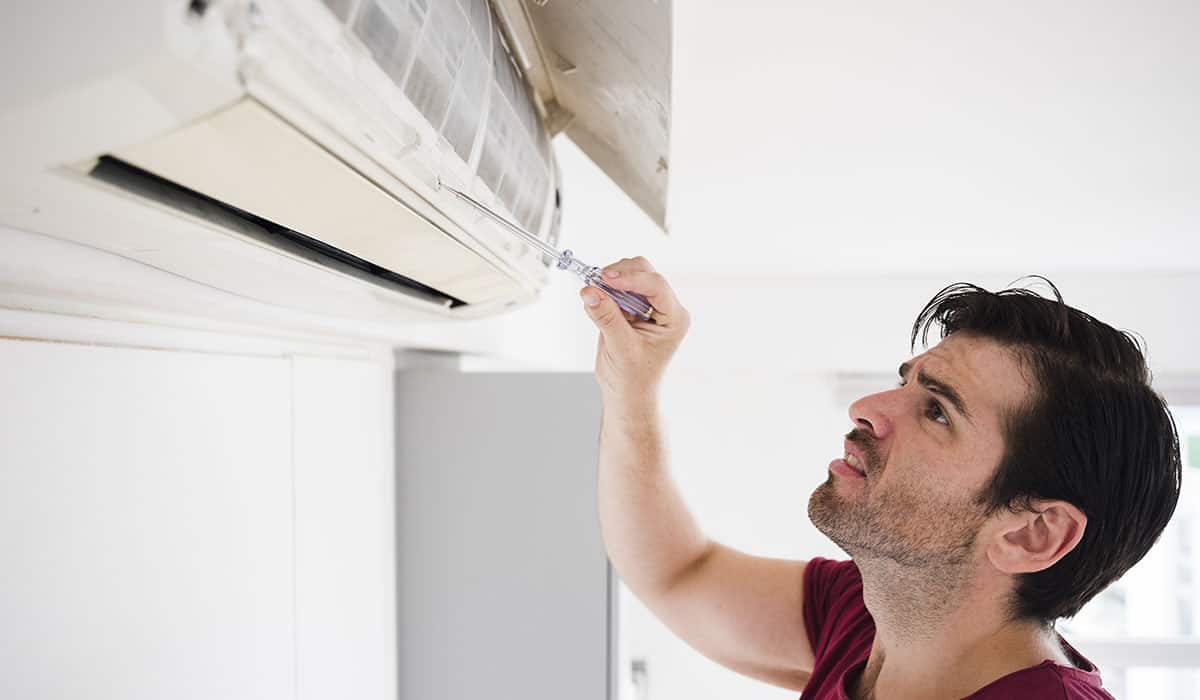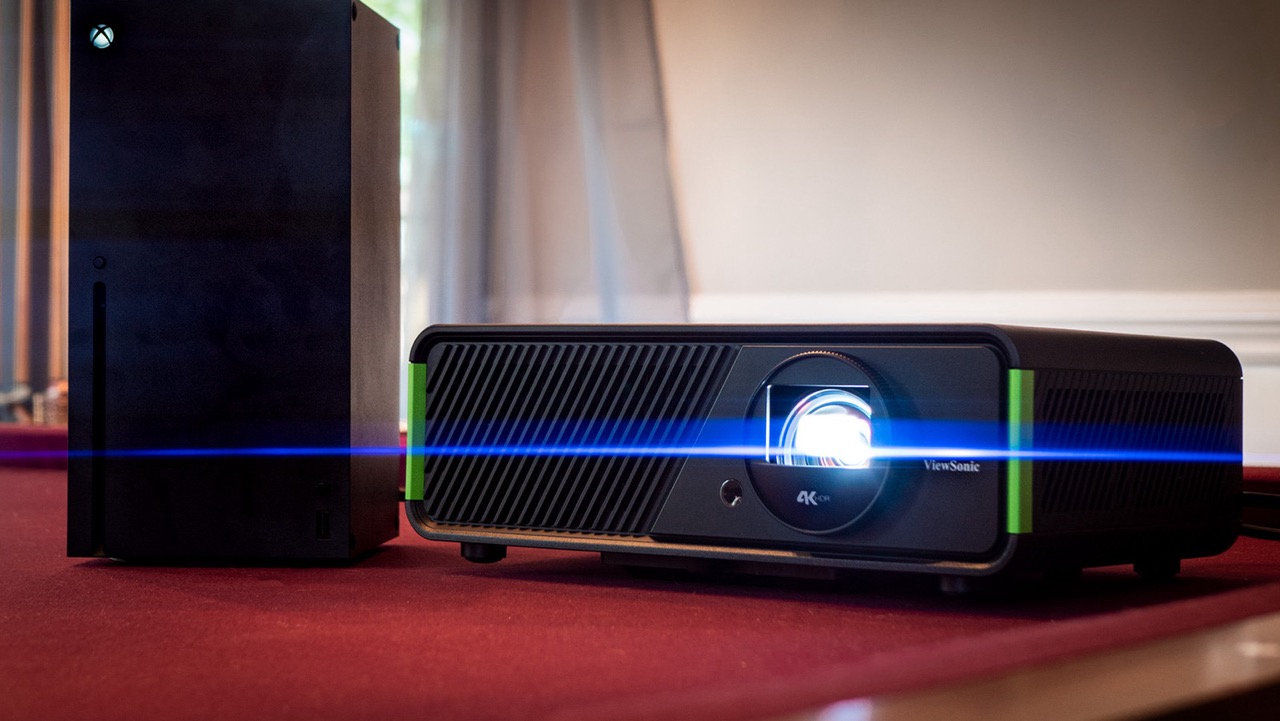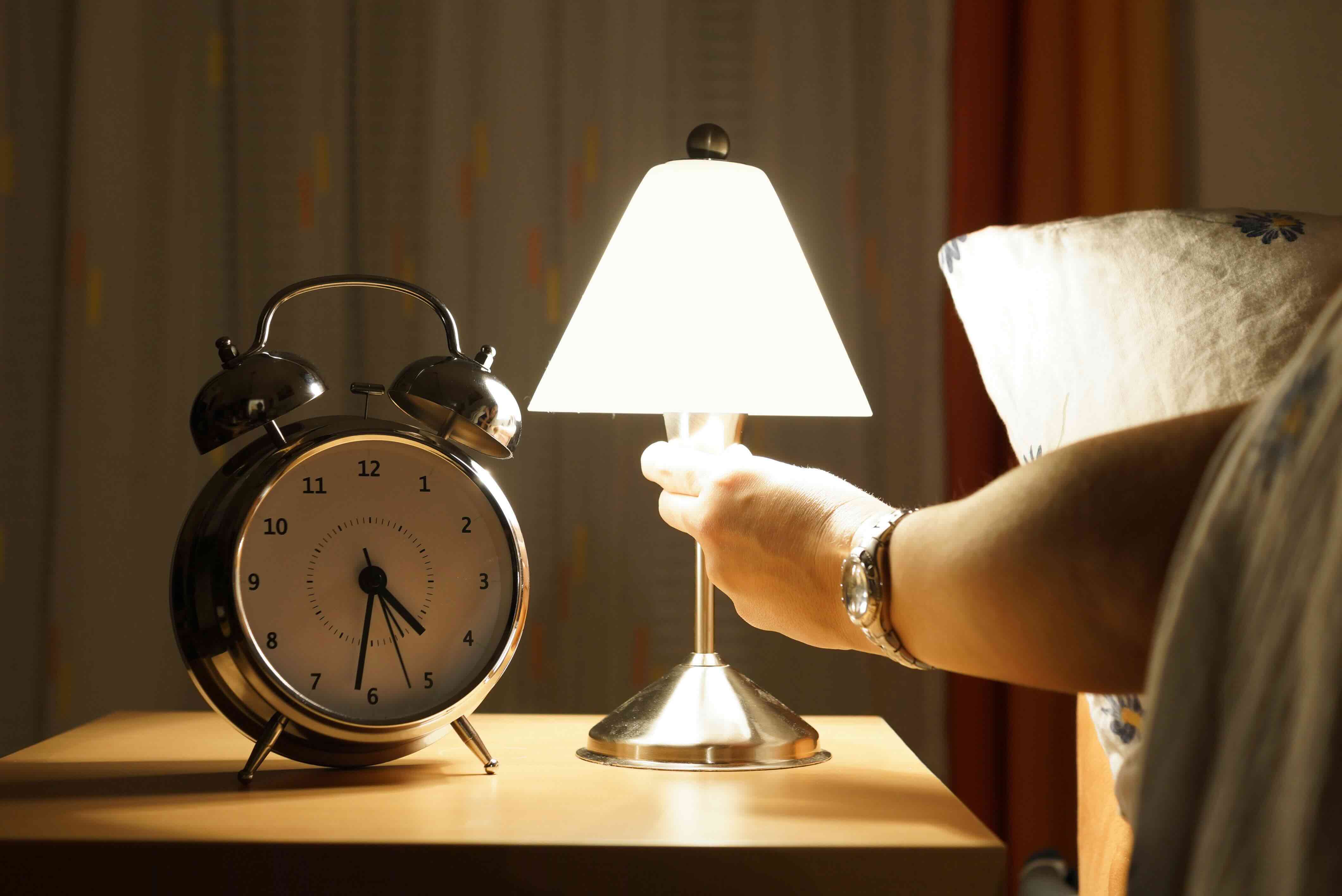

Furniture
Why Won’t My Touch Lamp Turn Off?
Modified: August 28, 2024
Having trouble with your touch lamp not turning off? Get expert advice on fixing touch lamps and other furniture-related problems at [website name]. Explore our articles and videos to find solutions now!
(Many of the links in this article redirect to a specific reviewed product. Your purchase of these products through affiliate links helps to generate commission for Storables.com, at no extra cost. Learn more)
Possible Reasons for a Touch Lamp Not Turning Off
Touch lamps are convenient and stylish sources of lighting that can add a touch of sophistication to any room. However, there may be instances where your touch lamp refuses to turn off, even when you touch the base or the touch sensor repeatedly. This can be frustrating and perplexing, but there are several potential reasons why this might be happening. Let’s explore some of the possible causes:
- Faulty Touch Sensor: One of the most common reasons for a touch lamp not turning off is a faulty touch sensor. The touch sensor, located on the base of the lamp, detects your touch and sends a signal to the lamp to turn on or off. If the touch sensor is malfunctioning or damaged, it may not register your touch properly, causing the lamp to stay on.
- Accumulated Dust or Debris: Over time, dust, dirt, and other debris can accumulate on the touch sensor’s surface, obstructing its ability to detect your touch accurately. Clean the touch sensor with a soft, lint-free cloth or a cotton swab dipped in rubbing alcohol to remove any dirt or grime that may be interfering with its functionality.
- Damage Wiring or Loose Connection: Another potential reason for your touch lamp not turning off is damaged wiring or a loose connection. If the internal wiring of the lamp is frayed, damaged, or has become loose over time, it can disrupt the normal functioning of the touch sensor and prevent the lamp from turning off when touched. In this case, it’s recommended to have a professional electrician inspect and repair the wiring to ensure safe operation.
- Interference from Other Electronic Devices: Electronic devices such as smartphones, tablets, or even nearby appliances can emit electromagnetic signals that may interfere with the touch sensor’s operation. Try moving such devices away from the lamp temporarily to see if it resolves the issue.
- Defective Light Bulb or Lamp Socket: A defective light bulb or lamp socket can also cause the touch lamp to remain on. A malfunctioning light bulb can create electrical issues that prevent the lamp from turning off as expected. Similarly, a faulty lamp socket can disrupt the flow of electricity, resulting in the lamp staying illuminated. Try replacing the light bulb and checking the lamp socket for any signs of damage.
- Malfunctioning Dimmer Switch: Some touch lamps feature a built-in dimmer switch that allows you to adjust the brightness levels. If the dimmer switch is malfunctioning, it might prevent the lamp from turning off completely. Try adjusting the dimmer switch to the highest brightness level and then attempt to turn off the lamp again.
- Power Supply Issues: Insufficient or fluctuating power supply can affect the touch lamp’s performance. Ensure that the lamp is connected to a stable power source and consider using a surge protector to protect against power surges that could interfere with the touch sensor.
- Touching the Lamp with Wet or Greasy Hands: Moisture or oils from your hands can create a barrier between your touch and the touch sensor, causing it to malfunction. Before touching the lamp, make sure your hands are dry and clean to ensure a proper connection with the touch sensor.
- Touch Lamp Sensitivity Settings: Depending on the model of your touch lamp, there may be sensitivity settings that can be adjusted to customize the response of the touch sensor. Consult the lamp’s user manual or manufacturer’s instructions to see if there are any sensitivity adjustments that can be made.
- Water or Moisture Damage: If the touch lamp has been exposed to water or moisture, it can damage the touch sensor, leading to a malfunction. In such cases, it is advised to discontinue using the lamp and have it inspected and repaired by a professional.
While these are some common causes for a touch lamp not turning off, it’s important to note that each touch lamp model may have its own unique design or features that can affect its functionality. If you’re unable to determine the cause or resolve the issue on your own, it’s recommended to seek assistance from a professional electrician or contact the manufacturer for further guidance.
Key Takeaways:
- Keep your touch lamp clean and dry to prevent issues. Regularly clean the touch sensor and surrounding area to maintain proper functionality and ensure the lamp turns off as expected.
- Check for damaged wiring, interference, and sensitivity settings. Address power supply issues and avoid touching the lamp with wet or greasy hands to ensure reliable touch lamp performance.
Read more: Why Wont My Washer Turn On
Faulty Touch Sensor
A touch sensor is the critical component responsible for detecting your touch and sending a signal to the touch lamp to turn on or off. When the touch sensor becomes faulty, it can cause your touch lamp to not turn off as expected.
There are several potential issues that can lead to a faulty touch sensor. One possibility is physical damage to the sensor itself, which can occur due to accidental bumps, drops, or excessive pressure. If the touch sensor is cracked or broken, it may not be able to accurately detect your touch, resulting in the lamp staying on.
Another cause of a faulty touch sensor is wear and tear over time. Like any electronic component, touch sensors can degrade over extended periods of use. This can result in decreased sensitivity or even complete failure of the touch sensor.
In some cases, the issue may not lie with the touch sensor itself, but rather with the circuitry that connects the touch sensor to the lamp’s power supply. Faulty wiring or loose connections can disrupt the flow of electricity, preventing the touch sensor from properly sending the signal to turn off the lamp.
To determine whether the touch sensor is the culprit, you can try a simple troubleshooting technique. Start by cleaning the touch sensor with a soft, lint-free cloth or a cotton swab dipped in rubbing alcohol. Accumulated dust, dirt, or oils from your skin can interfere with the touch sensor’s functionality. Give it a gentle wipe down and then test the lamp again to see if it turns off properly.
If cleaning doesn’t solve the issue, you may need to consider replacing the touch sensor. Depending on the lamp model, this may be a relatively simple task that you can do yourself, or it may require the assistance of a professional electrician or contacting the manufacturer for a replacement part.
When replacing the touch sensor, be sure to follow the instructions provided in the lamp’s user manual or the guidance provided by the manufacturer. Disconnect the lamp from the power source before attempting any repairs or replacements to avoid the risk of electric shock.
Having a faulty touch sensor can be frustrating, but with proper care and maintenance, you can help extend the lifespan of your touch lamp and minimize the chances of encountering such issues. Regularly clean the touch sensor, avoid excessive force or pressure when touching the lamp, and handle the lamp with care to prevent accidental damage to the touch sensor or other components.
If you’re unsure about how to proceed or if the touch sensor replacement seems too complicated, it’s best to seek professional assistance. They can diagnose the issue accurately and provide the necessary expertise to get your touch lamp working properly again.
Accumulated Dust or Debris
Accumulated dust or debris can be another common reason why a touch lamp may not turn off properly. Over time, dust, dirt, and other particles can accumulate on the touch sensor’s surface, affecting its sensitivity and ability to detect your touch accurately.
To determine if accumulated dust or debris is causing the issue, start by inspecting the touch sensor on the base of the lamp. Look for any visible dirt or grime that may be covering the surface of the sensor. You can use a soft, lint-free cloth or a cotton swab to gently wipe the touch sensor and remove any dirt particles.
If the touch sensor is not easily accessible or if there is still visible dirt even after cleaning, you may need to disassemble the touch lamp partially to reach the touch sensor. Consult the lamp’s user manual or contact the manufacturer for guidance on how to safely remove the lampshade or other components to access the touch sensor for cleaning.
When cleaning the touch sensor, it’s important to use gentle, non-abrasive materials. A soft cloth or cotton swab dipped in a small amount of rubbing alcohol can be effective for cleaning the touch sensor. Gently wipe the surface of the touch sensor, being careful not to apply excessive force that could damage the delicate components.
After cleaning the touch sensor, allow it to dry completely before reassembling the touch lamp and testing if the issue has been resolved. It’s important to ensure that no moisture remains on the touch sensor, as this can lead to further issues or damage to the lamp.
Regular maintenance can help prevent excessive dust from accumulating on the touch sensor in the first place. Dusting the touch lamp regularly with a soft cloth or using a handheld vacuum cleaner with a brush attachment can help remove any dust particles that may settle on the surface.
In addition to cleaning the touch sensor, it can also be beneficial to keep the surrounding area clean and dust-free. This includes regularly dusting the lampshade, as any dust that accumulates on the lampshade can potentially make its way onto the touch sensor and affect its performance.
By regularly cleaning the touch sensor and the lamp, you can help maintain its proper functionality and prevent issues such as the lamp not turning off. If cleaning the touch sensor doesn’t resolve the problem, there may be other underlying issues that require further investigation. In such cases, it may be best to consult a professional electrician or contact the manufacturer for assistance.
Remember, always disconnect the touch lamp from the power source before attempting any cleaning or maintenance to ensure your safety.
Damaged Wiring or Loose Connection
Damaged wiring or a loose connection can be a potential cause of a touch lamp not turning off properly. The internal wiring of the lamp is responsible for transmitting the signal from the touch sensor to the lamp’s power supply, enabling it to turn on or off when touched.
If the wiring inside the lamp becomes frayed, damaged, or worn out over time, it can disrupt the flow of electricity and prevent the touch sensor from functioning correctly. Similarly, a loose connection can cause a break in the electrical circuit, leading to a failure to turn off the lamp when touched.
To determine if the issue lies with the wiring or connection, you can try a few simple troubleshooting steps. Start by visually inspecting the lamp’s cord and any visible wiring. Look for any signs of physical damage, such as frayed or exposed wires, or any loose connections.
If you notice any damage or suspect a loose connection, it’s crucial to take the necessary precautions. First, ensure that the touch lamp is disconnected from the power source to avoid any risk of electric shock. After disconnecting the power, you can gently examine the cord and wiring more closely, paying attention to any areas of concern.
If you notice any frayed or exposed wires, it’s essential to seek professional electrical repair or replace the lamp entirely. Do not attempt to repair or handle electrical wiring yourself unless you have the necessary knowledge and experience.
In the case of a loose connection, you may be able to resolve the issue by tightening any loose screws or connectors. Use a screwdriver or appropriate tools to securely fasten any loose parts, ensuring a tight and stable connection.
However, if you’re uncertain or uncomfortable with handling electrical components, it is strongly advised to seek the assistance of a professional electrician. They have the expertise and knowledge to safely inspect and repair any wiring or connection issues in your touch lamp.
Regular maintenance and visual inspection of the lamp’s wiring can help prevent potential issues. Avoid excessive bending or tugging of the lamp’s cord, as this can strain the wiring and increase the likelihood of damage. Additionally, periodically check for any signs of wear and tear and address them promptly.
By taking the necessary precautions and seeking professional help when needed, you can ensure the safe and proper functioning of your touch lamp.
Interference from Other Electronic Devices
Interference from other electronic devices can contribute to a touch lamp not turning off as expected. Electronic devices such as smartphones, tablets, televisions, or even nearby appliances can emit electromagnetic signals that may interfere with the touch sensor’s functionality.
When electronic devices emit electromagnetic signals, they can disrupt the proper functioning of the touch sensor, causing it to misinterpret inputs or fail to detect touch altogether. This interference can result in the touch lamp not responding to your attempts to turn it off.
To determine if interference from other electronic devices is the cause of the problem, start by observing the behavior of the touch lamp when nearby devices are in use. Note if the lamp behaves differently when certain devices are nearby or in use.
If you notice that the touch lamp consistently experiences issues when specific electronic devices are present, try moving those devices farther away from the lamp. In some cases, even a small adjustment in the positioning of the touch lamp or the interfering device can reduce or eliminate the interference.
If moving the devices or adjusting the positioning does not resolve the issue, consider using a surge protector or power conditioner. These devices can help regulate the power supply and filter out electromagnetic interference, minimizing the impact on the touch sensor’s performance.
Additionally, if you have access to the settings of the interfering electronic devices, consider adjusting the Wi-Fi channels or frequency bands they operate on. By changing the channel or frequency, you may be able to reduce interference and improve the touch lamp’s functionality.
It’s important to note that not all touch lamps are equally sensitive to electromagnetic interference. Some touch lamps may be more prone to interference than others due to variations in design and manufacturing. If interference from nearby electronic devices persists despite troubleshooting methods, it may be beneficial to replace the touch lamp with a model that is specifically designed to handle such interference.
Regular maintenance and care of your touch lamp can also help minimize the chances of interference. Keep the lamp clean and free from dust or debris that could potentially affect the touch sensor. Additionally, ensure that the power cord and connections are secure and in good condition. Loose or damaged connections can increase the risk of interference.
By being mindful of potential sources of electromagnetic interference and taking appropriate measures, you can improve the reliability and performance of your touch lamp.
Read more: Why Wont My Fan Turn On
Defective Light Bulb or Lamp Socket
A defective light bulb or lamp socket can also be a reason why a touch lamp may not turn off properly. Both the light bulb and the lamp socket play crucial roles in the lamp’s functionality, and any issues with either component can affect its operation.
Firstly, consider checking the light bulb. A malfunctioning or faulty light bulb can create electrical issues that prevent the lamp from turning off when touched. This can include problems such as a loose filament, a short circuit, or a defective switch inside the bulb itself.
Try replacing the light bulb with a new one to see if it resolves the issue. Ensure that the replacement bulb is compatible with the lamp’s specifications, including wattage and base type. If the new bulb allows the touch lamp to turn off properly, it’s likely that the original bulb was defective.
If replacing the light bulb doesn’t fix the problem, examine the lamp socket itself. The lamp socket is the component that holds the light bulb in place and provides the electrical connection. Over time, the lamp socket may become worn or damaged, resulting in unreliable contact between the bulb and the electrical circuit.
Inspect the lamp socket for any signs of damage, such as loose connections, charring, or corrosion. If you notice any visible issues, it may be necessary to replace the lamp socket. Consult the lamp’s user manual or contact the manufacturer for guidance on finding a compatible replacement socket.
Before attempting to replace the lamp socket, remember to disconnect the lamp from the power source to prevent any risk of electric shock.
If you suspect that the lamp socket may be the cause of the problem but are unsure about how to proceed with replacement, it’s advisable to seek the assistance of a professional electrician. They have the necessary knowledge and expertise to safely handle and replace lamp sockets.
Regular maintenance and inspection of the light bulb and lamp socket can help identify issues early on. Keep an eye out for any flickering or signs of abnormal behavior from the light bulb, as these can be indicators of a defective bulb or socket. Replace light bulbs promptly when they burn out to minimize any potential impact on the lamp’s performance.
By ensuring that both the light bulb and lamp socket are in good working condition, you can increase the chances of your touch lamp functioning correctly, including turning off as expected.
Check the light bulb and make sure it is properly screwed in. If it is loose, it may not make proper contact and could cause the touch lamp to not turn off.
Malfunctioning Dimmer Switch
If your touch lamp features a built-in dimmer switch, a malfunctioning switch can be a possible reason why the lamp is not turning off properly. The dimmer switch allows you to adjust the brightness levels of the lamp, but when it malfunctions, it can disrupt the lamp’s on/off functionality.
A malfunctioning dimmer switch may occur due to wear and tear over time or a manufacturing defect. It can cause inconsistent performance, including the lamp not responding to touch commands or failing to turn off completely.
To troubleshoot a malfunctioning dimmer switch, start by adjusting the switch to the highest brightness level. Sometimes, the switch may get stuck or become unresponsive at lower brightness settings, leading to the lamp not turning off as expected. By setting the switch to the highest brightness level, you can test if it is responsive and if the lamp turns off when touched in this state.
If the dimmer switch is still not functioning properly even at the highest brightness level, try cleaning the switch. Dust, dirt, or debris accumulation can affect the performance of the switch. Use a soft, lint-free cloth or a cotton swab dipped in rubbing alcohol to gently clean the switch and remove any particles that may be interfering with its functionality.
If cleaning the switch doesn’t resolve the issue, it may indicate a more significant problem with the switch or its internal wiring. In such cases, it is best to consult a professional electrician or contact the manufacturer for further assistance. They will have the expertise to diagnose the problem and provide the necessary repair or replacement options.
When dealing with a malfunctioning dimmer switch in a touch lamp, it is important to emphasize safety. Always disconnect the lamp from the power source before attempting any troubleshooting or repairs. Working with electrical components can be hazardous, so if you are uncertain or uncomfortable with the process, it is recommended to seek professional help.
Regular maintenance of the dimmer switch can help prolong its lifespan and prevent potential issues. Keep the switch clean and free from dust or debris, and avoid excessive force or aggressive turning when adjusting the brightness levels. Being gentle and careful with the switch can help maintain its proper functionality over time.
By addressing any issues with the dimmer switch promptly and with the appropriate expertise, you can restore the proper function of your touch lamp and enjoy its adjustable lighting features once again.
Power Supply IssuesPower supply issues can contribute to a touch lamp not turning off properly. If there are problems with the power supply, it can disrupt the normal functioning of the lamp’s touch sensor, leading to issues with turning off the lamp.
One possible power supply issue is insufficient voltage. If the power supply is not providing enough voltage to the lamp, it may not receive the necessary power to turn off when touched. This can occur if the lamp is connected to a low-quality or incompatible power source.
Ensure that the touch lamp is connected to a stable power source that meets the manufacturer’s specifications. Verify that the voltage output matches what is required by the lamp. Consider using a surge protector or voltage regulator to protect against power surges or fluctuations that can affect the touch lamp’s functionality.
Another power supply issue that can affect the touch lamp is electrical interference. Electromagnetic signals from other electronic devices or nearby power lines can cause interference that disrupts the touch sensor’s operation and prevents the lamp from turning off.
Try moving the touch lamp to a different location in the room, away from other electronics or power sources. Sometimes, a simple adjustment in positioning can minimize or eliminate the interference. Additionally, consider using a power conditioner or surge protector with built-in noise reduction features to help mitigate electrical interference.
Fluctuating power supply can also be a factor. If the voltage fluctuates frequently, it can affect the touch lamp’s ability to properly respond to touch commands. Contact an electrician to inspect and determine if there are any wiring issues within the home or building that are causing the power fluctuations.
It’s important to note that in some cases, power supply issues may be beyond your control or require professional assistance to resolve. If you suspect power supply problems, it is recommended to consult an electrician who can evaluate and rectify the issue.
Regular maintenance and care of the touch lamp can help prevent some power supply issues. Ensure that the power cord is not damaged or frayed. Periodically check the plug for any signs of wear or loose connections. Additionally, keep the lamp and its components clean and free from dust or debris that may affect the power supply.
By addressing power supply issues and ensuring a stable and uninterrupted power source, you can increase the chances of your touch lamp turning off properly when touched.
Touching the Lamp with Wet or Greasy Hands
Touching a touch lamp with wet or greasy hands can contribute to it not turning off properly. Moisture or oils from your hands can create a barrier between your touch and the touch sensor, causing it to malfunction or not respond correctly.
When your hands are wet or greasy, the moisture or oils can transfer to the surface of the touch sensor. This can interfere with the sensor’s ability to detect your touch accurately, resulting in the lamp not turning off when touched.
To prevent this issue, always ensure that your hands are dry and clean before touching the lamp. If your hands are wet, dry them thoroughly with a towel or allow them to air dry before attempting to turn off the lamp.
If your hands are greasy, it’s important to wash them with soap and water to remove any oils or residue before touching the lamp. Once your hands are clean and dry, you can safely touch the lamp’s touch sensor and expect it to respond properly.
Regularly cleaning the touch sensor can also help prevent issues caused by moisture or oils. Use a soft, lint-free cloth or a cotton swab dipped in rubbing alcohol to gently clean the touch sensor. This will remove any accumulated dirt, oils, or residue that may interfere with its performance.
In addition to keeping your hands clean and dry, it’s important to handle the lamp with care. Avoid using excessive force or pressing too hard on the touch sensor, as this can potentially damage the internal components or the touch sensor itself.
By being mindful of the cleanliness and dryness of your hands when interacting with the touch lamp, you can ensure that it responds properly to your touch commands and turns off as expected.
Read more: Why Wont My Dishwasher Turn On
Touch Lamp Sensitivity Settings
Touch lamps often come with sensitivity settings that allow you to customize how responsive the touch sensor is to your touch. These settings can affect how easily the lamp can be turned on or off with a touch. If the sensitivity settings are not properly adjusted, it can result in the lamp not turning off as expected.
If you’re experiencing issues with your touch lamp not turning off, it’s worth checking if there are sensitivity settings that can be adjusted. Consult the lamp’s user manual or contact the manufacturer for instructions on how to access and modify the sensitivity settings.
Most touch lamps have a control panel or a designated area on the lamp base where you can make sensitivity adjustments. The settings are often adjusted by pressing or holding specific buttons or switches for a certain amount of time.
Experiment with different sensitivity settings to find the optimal level that suits your preferences and ensures reliable operation. Keep in mind that touch sensitivity can vary from person to person, so what works for one individual may not be suitable for another.
When adjusting the sensitivity settings, it’s recommended to start with the default or medium setting. Test the lamp by touching the sensor to determine if it responds appropriately and turns off as desired. If the lamp still does not turn off or the sensitivity feels too high or too low, make incremental adjustments until you find the ideal sensitivity level.
It’s important to be patient and take note of the changes you make to the settings. After each adjustment, test the lamp to evaluate its response. Remember that sensitivity adjustments can be a trial-and-error process, so it may take some time to find the perfect setting for your touch lamp.
If you have exhausted all available sensitivity settings and the touch lamp still does not turn off properly, there may be other underlying issues that require further investigation. In such cases, it’s recommended to consult a professional electrician or contact the manufacturer for further guidance.
Regularly reviewing and fine-tuning the sensitivity settings of your touch lamp can help maintain its functionality and ensure a seamless user experience. By finding the ideal sensitivity level, you can ensure that the lamp responds accurately to your touch commands and turns off reliably.
Water or Moisture Damage
Water or moisture damage can be a significant reason why a touch lamp is not turning off properly. If the lamp has been exposed to water or excessive moisture, it can lead to damage to the internal components, including the touch sensor, which hinders its functionality.
When water or moisture enters the touch lamp’s circuitry, it can cause corrosion, short circuits, or other electrical issues that prevent the lamp from responding correctly to touch commands. Additionally, moisture can create a barrier between your touch and the touch sensor, causing it to malfunction or not detect your touch at all.
If your touch lamp has been exposed to water or excessive moisture, it is crucial to take immediate action to prevent further damage. First, disconnect the lamp from the power source to minimize the risk of electric shock.
Next, carefully remove any visible water by gently patting the affected areas with a dry cloth. Avoid using any heat sources, such as hairdryers, to accelerate the drying process, as this can potentially cause further damage. Allow the lamp to air dry in a well-ventilated area for at least 24 to 48 hours.
After the lamp has completely dried, check for any signs of water damage or corrosion. Look for discoloration, rust, or any visible damage to the internal components. If you notice any issues, it’s best to seek professional assistance from an electrician or contact the manufacturer for guidance on repair or replacement options.
To prevent water or moisture damage in the future, it’s important to be mindful of the lamp’s placement. Avoid placing the touch lamp near water sources, such as sinks, bathtubs, or windows prone to leaks. Additionally, be cautious when cleaning the lamp and avoid directly spraying water or cleaning solutions onto the lamp’s surface.
Regular maintenance and cleaning can also help prevent moisture-related issues. Ensure that the lamp is regularly dusted and cleaned with a soft, lint-free cloth. This helps remove any accumulated dust or debris that can potentially trap moisture and lead to damage.
By being vigilant about preventing water or moisture damage and promptly addressing any incidents, you can help maintain the proper functioning of your touch lamp and ensure it turns off as expected.
Frequently Asked Questions about Why Won't My Touch Lamp Turn Off?
Was this page helpful?
At Storables.com, we guarantee accurate and reliable information. Our content, validated by Expert Board Contributors, is crafted following stringent Editorial Policies. We're committed to providing you with well-researched, expert-backed insights for all your informational needs.
